The partners
Tampere University
Tampere University (TAU, Tampereen korkeakoulusaatio sr) was created on January 1st 2019 as a merger of Tampere University of Technology (TUT) and University of Tampere (UTA). The multidisciplinary, foundation-based Tampere University is Finland’s second-largest university with 20.000 students and 330 professors. TAU conducts scientific research in technology, health and society and provides the highest education within these fields.
In 2019, the total income of the two universities was 321 M€ of which 24 % was external research funding. TAU ranks fourth among all Finnish participants in H2020 funding. The university researcher community and support services have long experience on EU funding. TAU has an EU support team dealing with legal, financial and administrative issues. TAU has been awarded with the European Commission’s ‘HR Excellence in Research’ logo.
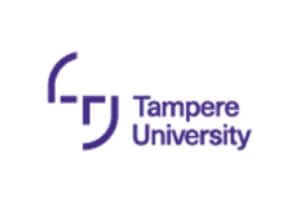
Short name
TAU
Website
https://www.tuni.fi/en
Type
University
Country
Finland
Role in the project
Coordinator, leader in WP0, WP4, WP7, WP8
KTH
KTH is responsible for one third of Sweden’s capacity for technical research and is the country’s largest organizer of technical/engineering education at university level. KTH is organized into five Schools, each covering a major field of engineering science. KTH education and research covers a broad spectrum – from natural sciences to all branches of engineering plus architecture, industrial economics, urban planning, work science and environmental technology. In addition to the research carried out by KTH’s Schools, a large number of national Competence Centers are located at KTH.
To facilitate formulation of cross-disciplinary research, KTH has set up six research platforms designed to break down traditional barriers between academic disciplines to deliver practical results that can help solve overarching global challenges. The Research Platforms encompass the following focus areas: Energy, Digitalization, Materials, Transport, Life Science Technology and Industrial Transformation.
There are 13 633 full year-equivalent undergraduate students, almost 1 722 active research students and 3 628 full time-equivalent employees.
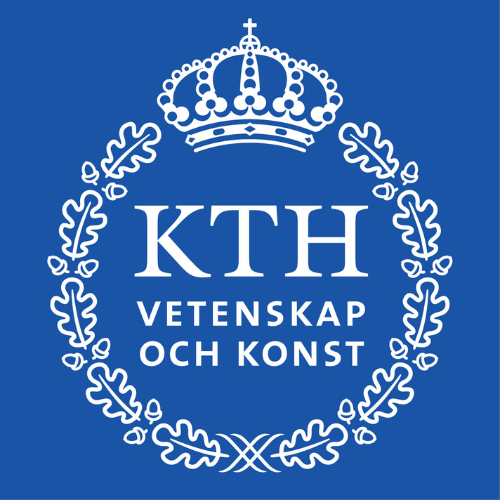
Short name
KTH
Website
www.kth.se/en
Type
University
Country
Sweden
Role in the project
Partner, leader in WP1 and WP3
Eindhoven University of Technology (TU/e)
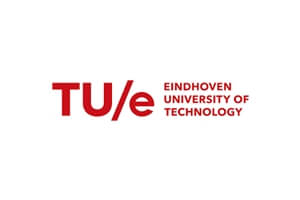
Short name
TU/e
Website
https://www.tue.nl/en/
Type
University
Country
The Netherlands
Role in the project
Partner, leader in WP2, WP5
BTU
Situated in the heart of the Lausitz region, BTU combines outstanding international research with future-oriented teaching. It makes an important contribution to society, our culture and the economy through knowledge and technology transfer and with further education. As a technical university, BTU offers a teaching concept found nowhere else in Germany: our courses of study lead to either a university or a university of applied science degree, or to a so-called dual education degree, which is obtained through a combination of academic schooling and vocational training. BTU offers around 80 applied or research-oriented study programmes for Bachelor or Master degree (repeatedly recognized in e.g. CHE Ranking), thereof twelve study programmes with an international focus. Approximately 7,000 students are enrolled at the BTU of which around 2,350 come from abroad. China, India, Poland and Nigeria represent the biggest country groups of the more than 110 different nations. Since July 2020 is the BTU one of the 20 European universities in Germany.
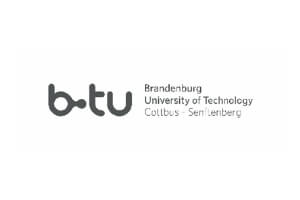
Short name
BTU
Website
https://www.b-tu.de/
Type
University
Country
Germany
Role in the project
Partner, leader in WP6
LIIKE Oy Arkkitehtistudio

Short name
Liike
Website
https://www.liike.eu
Type
Architectural office
Country
Finland
Role in the project
Partner, main contribution in WP5, WP7, WP8
Helsingborgshem
We offer a wide range of homes for customers with different wishes and needs. We have ordinary apartments in different sizes and designs, terraced houses, student rooms, senior housing and collective housing. In addition to housing, we also rent out premises that accommodate everything from health centers and shops to preschools and companies.
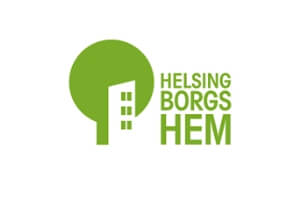
Short name
Hbh
Website
https://www.helsingborgshem.se
Type
Municipal housing provider
Country
Sweden
Role in the project
Partner, main contribution in WP5, WP7, WP8
IMd Structural Engineers
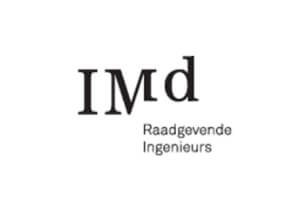
Short name
IMd
Website
https://www.imdbv.nl
Type
Engineering consultant
Country
The Netherlands
Role in the project
Partner, main contribution in WP2, WP5, WP7
ECOSOIL Ost GmbH
ECOSOIL Ost GmbH, to which the “careful crane-guided dismantling” project team belongs, emerged from the mine renovation at the end of the 1990s. This project team already started successfully in 2001 with the crane-operated dismantling of prefabricated buildings from “GDR times”.
Since then an intensive and very constructive cooperation with the BTU Cottbus has developed, especially with Prof. Dr. Mettke and her field of work “construction recycling”. In the 2001-2020 financial years, 170 properties with a dismantling volume of € 40.5 million were realized solely through crane-guided dismantling. The realization involves objects in the construction methods Q6 – 0.8 Mp, 1.1 and 2.0 Mp strip construction as well as P2 and WBS 70 – construction methods in various rationalization stages.
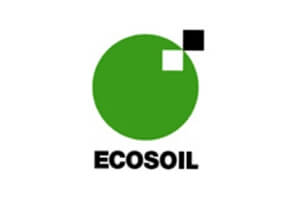
Short name
Ecosoil
Website
https://www.ecosoil-umwelt.de/ecosoil-ost-gmbh
Type
Demolition and construction company
Country
Germany
Role in the project
Partner, main contribution in WP2, WP3, WP5, WP7, WP8
LOHMANN UND ROBINSKI professional web solutions
LOHMANN UND ROBINSKI have been offering professional web design, digital solutions, full internet service as well as online and offline marketing for 22 years. They develop and implement modern e-business and multimedia solutions as well as marketing concepts for medium-sized companies. Their focus is on comprehensive consulting and support for companies in all Internet and marketing issues. In the development of individual and industry-specific customer solutions, they use the latest programming technologies and implement customer requests in a timely manner. A total of 5 employees and 1 freelancer works mainly in the areas of web programming, database and portal development, graphic and web design, internet full service and marketing.
Robinski cooperates in many projects with BTU and with the city of Cottbus. In 2006 they worked in a science project of Prof. Angelika Mettke on the topic of reuse of precast concrete elements and worked on the first digital solution of the database of elements in Germany.

Short name
LOHMANN UND ROBINSKI
Website
https://lohmann-robinski.de
Type
Digital solutions
Country
Germany
Role in the project
Partner, main contribution in WP6, WP7, WP8
Tampere
Tampere aims to be carbon neutral by 2030. This means that Tampere will reduce its greenhouse gas emissions by 80 per cent compared to 1990 levels and that the remaining 20 per cent will be compensated by increasing carbon sinks, such as forests and green areas.

Short name
Tampere
Website
https://www.tampere.fi
Type
City administration
Country
Finland
Role in the project
Partner, main contribution in WP7, WP8
Green Building Council Croatia

Short name
CGBC
Website
http://www.gbccroatia.org/
Type
Non-governmental organisation
Country
Croatia
Role in the project
Partner, leader in WP 9
Ramboll
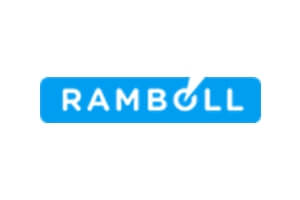
Short name
Ramboll
Website
https://fi.ramboll.com/
Type
Engineering consultant
Country
Finland
Role in the project
Partner, main contribution in WP2, WP5, WP7, WP8
Umacon

Short name
Umacon
Website
https://www.umacon.fi
Type
Demolition company
Country
Finland
Role in the project
Partner, main contribution in WP2, WP7, WP8
P. Jähne Ingenieurbüro GmbH
P. Jähne Ingenieurbüro GmbH is an independent consulting engineering company based in Cottbus. The company exists since 1991 and currently has 8 employees. Peter Jähne is the founder and director of the company. They offer architectural and structural engineering services in planning phases 1 to 9 – from basic determination of documentation with checking of the cost framework by the client and preliminary planning to property monitoring – construction supervision and documentation and property support including warranty tracking. That means completely planning of a building.
The company was awarded with the Brandenburg Engineer Prize in 2008 for the special project with reuse of precast concrete components and with the Brandenburg Prize for the Preservation of Historic Monuments in 2009.
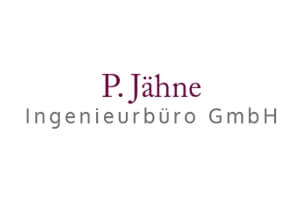
Short name
Jähne
Website
https://www.ib-jaehne.de/
Type
Structural engineer
Country
Germany
Role in the project
Partner, main contribution in WP5, WP7
Skanska
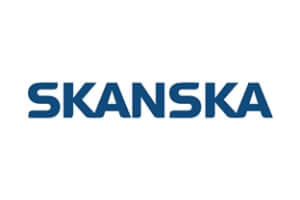
Short name
Skanska
Website
https://www.skanska.fi
Type
Construction company
Country
Finland
Role in the project
Partner, main contribution in WP2, WP5, WP7
Consolis VBI
VBI is the Dutch subsidiary of the international Consolis Group, the leading precast concrete solution provider in Europe. The Group provides smart, sustainable precast concrete structures for the transportation, utilities and building sectors in the European and Mediterranean region (21 countries, more than 11,000 employees). The prefabricated products and solutions in building sector include flooring-, framing and wall- and facade elements for residential and non-residential buildings; tunnel segments and bridge beams for infrastructure; and water- and sanitation pipes for underground infrastructures. Consolis Group subsidiaries manufacture prefabricated concrete products at off-site locations in environment-controlled factories. The engineered products are transported to the project-site and assembled to form the final structure. VBI is specialized in and leading producer of prestressed hollow core slabs in The Netherlands. At the moment the VBI Group consists of 7 production companies (5 precast factories, one for polystyrene products and one specialized in steel components and machinery) and the head-office with 2 entities: VBI Verkoopmaatschappij B.V. which holds the Sales, Design and Logistic department for processing the VBI products, and VBI Ontwikkeling B.V. which holds the supporting departments such as: Finance, IT and R&D.
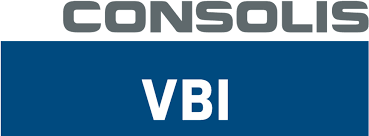
Short name
Consolis VBI
Website
www.vbi.nl
Type
Precast concrete manufacturer
Country
The Netherlands
Role in the project
Partner, main contribution in WP3, WP5, WP7
Consolis Parma
Parma Oy is a Finnish subsidiary of the international Consolis Group, the leading precast concrete solution provider in Europe. The Group provides smart, sustainable precast concrete structures for the transportation, utilities and building sectors in the European and Mediterranean region (21 countries, more than 11,000 employees). The prefabricated products and solutions in building sector include flooring, framing and wall and facade elements for residential and non-residential buildings; tunnel segments and bridge beams for infrastructure; and water- and sanitation pipes for underground infrastructures. Consolis Group subsidiaries manufacture prefabricated concrete products at off-site locations in environment-controlled factories. The engineered products are transported to the project-site and assembled to form the final structure. Parma Oy is the largest producer of precast concrete elements in Finland, with operations in 16 municipalities. The company was founded in its current form in 1993 but has roots spanning over a century. At present, Parma employs more than 650 persons and produces an array of precast concrete element for building and infrastructure construction, including but not limited to hollow-core slabs, wall elements, columns, beams, and balconies.

Short name
Parma
Website
www.parma.fi
Type
Precast concrete manufacturer
Country
Finland
Role in the project
Partner, main contribution in WP3
Consolis Strängbetong
Strängbetong AB is a Swedish subsidiary of the international Consolis Group, the leading precast concrete solution provider in Europe. The Group provides smart, sustainable precast concrete structures for the transportation, utilities and building sectors in the European and Mediterranean region (21 countries, more than 11,000 employees). The prefabricated products and solutions in building sector include flooring-, framing and wall- and facade elements for residential and non-residential buildings; tunnel segments and bridge beams for infrastructure; and water- and sanitation pipes for underground infrastructures. Consolis Group subsidiaries manufacture prefabricated concrete products at off-site locations in environment-controlled factories. The engineered products are transported to the project-site and assembled to form the final structure. Strängbetong is today the leading company in Sweden to deliver industrially manufactured building systems from idea to final assembly. Our history starts way back in 1939 and today, we employ circa 950 people. We build everything from homes and offices to parking garages, halls and arenas. The starting point is ready-made concepts for each type of building, which we then adapt based on the project’s conditions and the needs you have as a customer. We manufacture the precast concrete elements in our factories, after which we transport the finished elements to the construction site and assemble them.

Short name
Strängbetong
Website
www.strangbetong.se
Type
Precast concrete manufacturer
Country
Sweden
Role in the project
Partner, main contributions in WP3, WP5 and WP7
Lagemaat
Lagemaat is (amongst several other core-business activities) a professional demolition and recycling specialist company. The company carries out a full-scale demolition package that includes also design, implementation and recycling of the demolition waste. Lagemaat was founded by Mat Lagemaat in 1977 and the company is headquartered in Heerde, The Netherlands. Since establishment of Lagemaat the focus has been in asbestos removal and building demolition. Demolition projects have become highly valued specialist jobs over the years. Especially industrial demolition works requires more and more specialized expertise. Lagemaat employs about 275 people and is one of the leading demolition companies in The Netherlands, especially in demanding demolition of industrial and large-scale residential real-estate. The company operates all over the Netherlands. Our clients are industry, energy, construction companies and the public sector such as cities, provinces and municipalities. We offer full-service demolition works for our clients. In addition to demolition activities, we offer a wide range of other works such as preparatory work like diamond cutting and asbestos removal. We have asbestos permits, which allows us to do asbestos removal on our sites. Recycling of the crushed concrete is one very important aspect of building demolition works as demolition work generates a lot of concrete. It is good material which can replace and save natural aggregates. When producing concrete-based aggregates, we have invested heavily in the way of processing concrete that we extract from demolition sites. For instance, our Circular Mineral ® process technique enables us to retrieve gravel, sand and cement from demolition concrete as direct alternatives for the virgin raw materials. By re-using precasted concrete one-on-one of course is the most effective way of circular principles in demolition and construction. By freeing up concrete elements from donor buildings and re-using them in constructing new. In our operations, we aim to reduce the environmental impacts in every aspect. We are committed to protect and prevent environmental pollution and continuously upgrade the quality of our environmental operations. We do preventive environmental work and we strive for continuous improvements. In practice, this means that our aim is to improve the demolition business and the environmental impacts. We aim to reduce the amount of waste and continuously enhance recycling efficiency, reduce harmful emissions, increase environmental, and responsibility awareness of staff. As already said, sorting and separation of waste materials is one of the key elements in demolition work. We have done excellent work in recycling because our percentage of recycling and recovery of materials is about 98%.

Short name
Lagemaat
Website
https://lagemaat-heerde.nl
Type
Demolition and construction company
Country
The Netherlands
Role in the project
Partner, main contribution in WP2
CIRCULAR STRUCTURAL DESIGN
CIRCULAR STRUCTURAL DESIGN (CSD) focuses on integrating circular economy principles into everyday structural design projects. By embracing the core ideas of the circular economy, CSD explores innovative solutions for a more sustainable built environment. This approach is guided by three key principles:
- Reducing the use of virgin resources through re-use
- Extending the lifecycle of products and to thereby re-duce waste production and minimizing emissions generated during the production of new elements
- Preserving limited resources by exploring re-new(able) and sustainable material alternatives
CSD operates at the intersection of research and practice, contributing to diverse projects across various building types.

Short name
CSD
Website
https://circular-structural-design.eu/
Type
Structural engineering consultancy
Country
Germany
Role in the project
Partner, leader WP5
Stadt Hohenmölsen
The town of Hohenmölsen (Federal state of Saxony Anhalt) is located in the east of the Burgenland district and borders on the Free State of Saxony. It’s an attractive place to live in the centre of the metropolitan region of Central Germany. Hohenmölsen benefits from its short distances to the centres of Halle, Gera and Leipzig. The urban area covers 75.31 km². In addition to the main town, the urban area comprises 5 villages. As a town full of energy, it offers its approximately 10,000 inhabitants more living, learning and recreation in a rural setting. Hohenmölsen was and still is characterised by brown coal mining for decades. A major transformation process towards a sustainable and CO2-neutral economy and energy supply has begun.
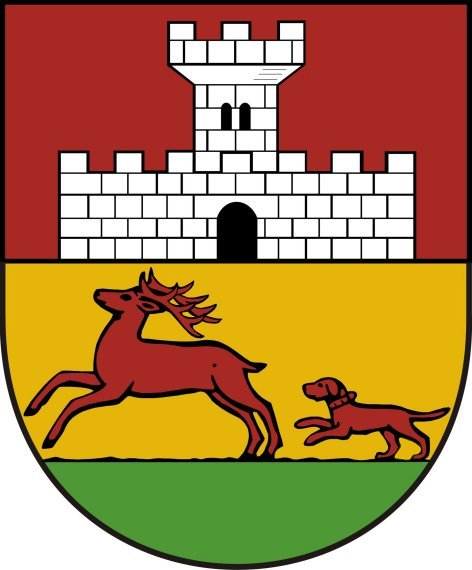
Short name
Hohenmölsen
Website
www.stadt-hohenmoelsen.de
Type
Town administration
Country
Germany
Role in the project
Partner, main contributions in WP3, WP5, WP8
Nederlandse Organisatie voor Toegepast Natuurwetenschappelijk Onderzoek
TNO is the largest organisation for multidisciplinary applied scientific research in the Netherland, and a member of the European Association of Research and Technology Organisations (EARTO). TNO’s mission is to connect people and knowledge to create sustainable innovations that boost the competitive strength of the industry, the excellence of governmental policies, and the well-being of the society. TNO collaborates with public and private partners within 9 research domains, including the most relevant domain for the IM-Safe project: ‘Buildings, Infrastructure and Maritime’. In the Netherlands, TNO enable and support the Ministry of Infrastructure and Water Management, provincial and local authorities, and the construction industry in performing research on road, railway and water infrastructures, including bridges, tunnels and water locks in order to monitor the conditions and optimise maintenance, retrofitting and replacement. TNO has developed and empirically validated predictive models using historical and real-time measurement data as input to provide more accurate and comprehensive insights into the future condition and residual lifespan. This novel condition forecasting has saved costs and prevented traffic disruptions while ensuring safety. In Europe and worldwide, TNO experts are deeply involved in the standardisation organisations in structural and material engineering, asset management and risk/probabilistic analysis related to structural safety, as well as in digitalisation (in particular BIM, Semantic Linked Data, IoT). Whenever necessary, TNO deploys its lab facilities to support controlled and in-depth testing and certification works.

Short name
TNO
Website
https://www.tno.nl
Type
Research and technology organization
Country
The Netherlands
Role in the project
Partner, main contributions in WP2 and WP5

